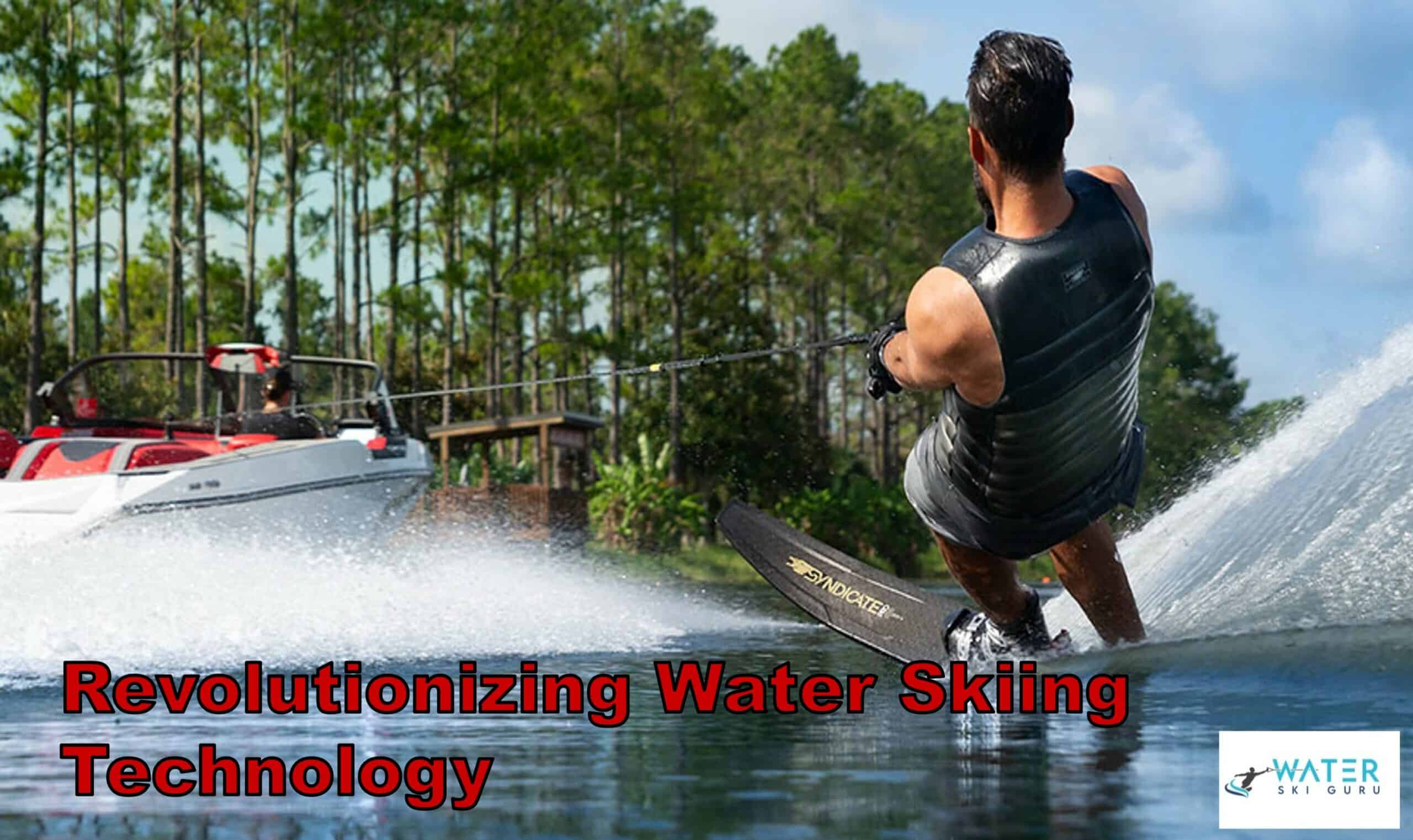I have been water skiing for over a decade now, and I have witnessed the evolution of this exhilarating sport firsthand. The advancements in water skiing technology have transformed the way we experience the rush of gliding across the water’s surface. From the materials used in ski construction to the power of ski boats, the latest innovations are revolutionizing water skiing and making it more accessible for enthusiasts worldwide.
In this article, I will explore the ground-breaking developments in water skiing technology that have taken place in recent years. We will delve into the materials used in ski construction, including thermoplastics, carbon fiber, and Kevlar, and how they have improved ski performance and durability.
We will also examine the improvements in tow ropes and personal floatation devices, which have made the sport safer and more comfortable.
Finally, we will explore the evolution of ski boats and engines, which have transformed the way we navigate the water and perform gravity-defying tricks. Join me as we take a closer look at the latest in water skiing technology and how it’s making waves in the world of water sports.
Advancements in Ski Materials
I’m amazed at how ski materials have evolved since Ralph Samuelson’s invention of water skis using wooden barrels and snow skis back in 1922. From wood to fiberglass, and now incorporating composites of various thermoplastics, aluminum, Kevlar, and carbon fiber, modern skis have become incredibly strong, lightweight, and flexible.
Innovative manufacturing techniques have allowed the development of water skis that are not only high-performing but also sustainable. Manufacturers now use recycled materials, reducing waste and the impact on the environment.
Sustainability in water ski materials is not just a trend, but a necessity. As the demand for water skiing equipment increases, so does the need for eco-friendly production methods. The use of recycled materials and innovative manufacturing techniques not only protects the environment but also ensures a long-lasting and high-performing product.
Check out this video about some of the amazing advancements in water ski technology.
It’s exciting to see how the water skiing industry is revolutionizing technology while also becoming more conscious of sustainability.
Improvements in Tow Ropes and PFDs
Exciting advancements in the materials and design of tow ropes and personal floatation devices have greatly improved safety and performance on the water. Innovative designs have revolutionized the materials used for tow ropes, making them stronger and more durable than ever before. High-end tow ropes are now made of ultra-high-molecular-weight polyethylene, which is 8 to 15 times stronger than steel. This smart technology allows for a safer and more enjoyable water skiing experience.
The same level of innovation is also seen in personal floatation devices (PFDs). Smart technology has enabled manufacturers to create PFDs that are not only buoyant but also comfortable to wear. The use of polyethylene or PVC foam cores contained within nylon or neoprene outer skins provides a comfortable fit that doesn’t impede movement. PFDs are now sold in various types and configurations to suit the particular needs and preferences of the user. The table below summarizes the different types of PFDs and their features to help you choose the right one for your water skiing activities.
| Type of PFD | Features |
| Type I | Designed for offshore use, can turn an unconscious person face-up in the water |
| Type II | Designed for calm waters, can turn an unconscious person face-up in the water |
| Type III | Designed for water sports, offers mobility and comfort |
| Type IV | Designed as throwable devices, typically used in emergencies |
| Type V | Designed for specific activities, such as kayaking or water skiing |
With these innovative designs and smart technologies, tow ropes and PFDs have become essential components of a safe and enjoyable water skiing experience. Choosing the right equipment is crucial, and with the advancements in technology, there is no excuse not to invest in high-quality gear.
Evolution of Ski Boats and Engines
As a water skier, I’ve noticed significant advancements in the design and power of ski boats and engines over the years. These improvements have revolutionized the sport, allowing for greater speed capabilities and fuel efficiency.
- Powerful engines: Ski boats now come equipped with high-performance engines that can generate more horsepower and torque. This means that skiers can experience greater speed and acceleration, making for a more thrilling ride on the water.
- Fuel efficiency: With the development of new technologies, ski boats are now more fuel-efficient than ever before. Advanced fuel injection systems and hybrid propulsion options have significantly reduced the amount of fuel consumed during a day on the water.
- Advanced designs: Ski boat manufacturers have also made significant strides in the design of their vessels. Sleek, aerodynamic shapes and lightweight materials allow for faster speeds and more agile handling, while advanced hull designs minimize drag and improve overall performance.
These advancements in ski boat and engine technology have transformed water skiing into a faster, more exhilarating sport. As a water skier, I appreciate the incredible power and efficiency of modern ski boats, which allow me to push my limits and achieve new levels of mastery on the water.
Frequently Asked Questions
How has water skiing technology impacted the sport’s popularity over time?
Performance enhancements and equipment affordability have made water skiing more accessible and enjoyable for enthusiasts. As technology advances, skis with composites of various materials and adjustable fins improve stability and speed. High-strength tow ropes and comfortable PFDs enhance safety.
What safety measures should be taken when using high-tech water skiing equipment?
When using high-tech water skiing equipment, safety precautions are necessary to prevent injury. This includes wearing a properly fitting PFD, using a strong tow rope, and adjusting ski fins for stability. Always prioritize safety over advancements in technology.
How have water skiing competitions changed as a result of technological advancements?
Competition improvements in water skiing have been driven by equipment advancements. The use of composites has led to lighter and stronger skis, while adjustable fins and wings have improved stability. Technical innovation has elevated the sport to new heights.
Are there any environmental concerns related to the use of high-tech water skiing equipment?
As an avid water skier, I’m aware of the environmental impact and sustainability concerns related to high-tech equipment. The production and disposal of materials like carbon fiber and PVC foam cores have detrimental effects. It’s important to consider eco-friendly alternatives.
What types of maintenance and upkeep are required for modern water skiing equipment?
Maintaining modern water skiing equipment is crucial for its longevity. Regular maintenance includes checking the bindings, fins, and ropes for any damage or wear and tear, and keeping the skis clean and dry. Proper upkeep can extend the equipment’s lifespan and ensure optimal performance.
Conclusion
All in all, water skiing technology has come a long way. From the early days of using wooden barrels and snow skis, we now have high-tech composites that are lightweight, durable, and designed to maximize performance.
Moreover, advancements in tow ropes, personal flotation devices, and ski boats have made the sport safer and more enjoyable than ever before.
As I reflect on the latest innovations in water skiing technology, I can’t help but feel excited for what the future holds. I envision ski materials becoming even lighter and stronger, tow ropes becoming more efficient, and ski boats becoming more eco-friendly.
With these advancements, water skiing will continue to be a thrilling and exhilarating water sport, pushing the limits of human performance and endurance. Truly, the future of water skiing technology is bright and full of endless possibilities.

